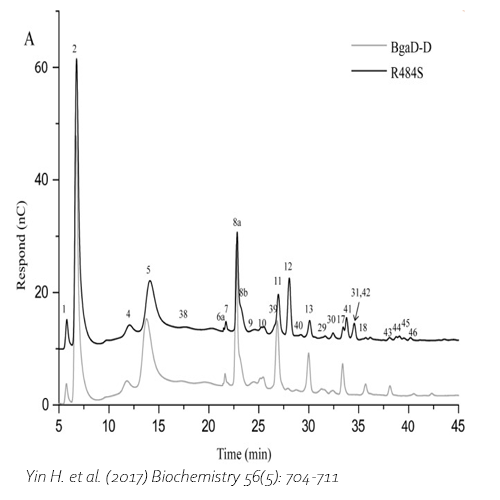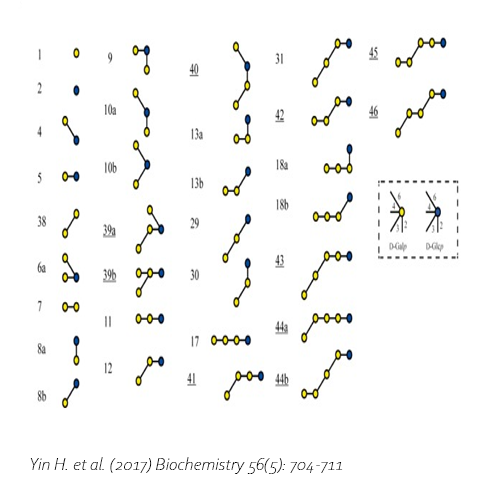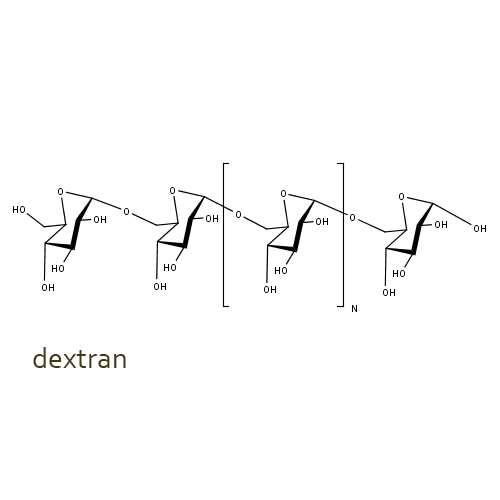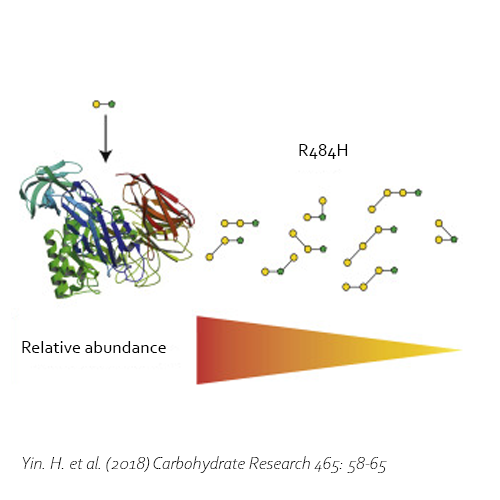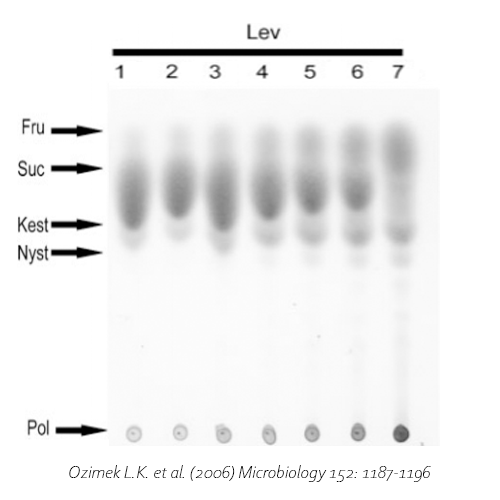Oligos (GOS) from lactose, synthesized by BgaD-D of Bacillus circulans ATCC 31382 mutant R484H
Request quote for price
Beschrijving
The C-terminally truncated β-galactosidase enzyme of Bacillus circulans ATCC 31382, also known as BgaD-D, is able to synthesize prebiotic galactooligosaccharides (GOS). These products are widely used as a biocatalyst in the food industry, because of their healthy effect on humans. GOS mixtures mimic the prebiotic effects of the human milk oligosaccharides, and therefore are added to infant formula.
The enzyme BgaD-D mutant R484S displays altered enzyme specificity, leading to new types of GOS products. The GOS mixture produced by the mutant enzyme introduces 14 new structures that were not present in the wild type, 10 of these were completely novel structures (39-46). The other four structures (38, 29-31) were identified in earlier experiments (van Leeuwen et al. 2016) In contrast with the wild type, the GOS products synthesized by BgaD-D mutant R484S presents a carbohydrate mixture showing a majority of β(1→3) and β(1→4) linked galactose on the reducing glucose residue. The products contain both linear and branched structures. Some basic structures are further elongated with β(1→3) and β(1→4)-linked galactose residues, resulting in 3,4-disubstituted galactose residues. The yield of compound β-D-galp-(1→3)-β-D-galp(1→4)-D-Glc-p (12) in the mixture of mutant R484S is 50 times higher compared to that of the wild type. Indicating residue R484 is crucial for the linkage specificity of the BgaD-D enzyme.
Human newborns are capable to produce β-galactosidase enzymes to digest lactose. Nevertheless, the majority of adults have lost the ability to produce these enzymes. This can end up in lactose intolerance, making them incapable to digest dairy products. The lactose could be removed from the milk to solve this problem, and the residual product could be converted to high valuable lactose derivates like GOS.
Yin, H. et al., 2017. Engineering of the Bacillus circulans β-galactosidase product specificity. Biochemistry, 7 2, 56(5), pp. 704-711. DOI 10.1021/acs.biochem.7b00032
van Leeuwen, S. S., Kuipers, B. J., Dijkhuizen, L. & Kamerling, J. P., 2016. Comparative structural characterization of 7 commercial galacto-oligosaccharide (GOS) products. Carbohydrate Research, 29 4, Volume 425, pp. 48-58. DOI 10.1016/j.carres.2016.03.006
Extra informatie
| Volume | 100 mg |
|---|
